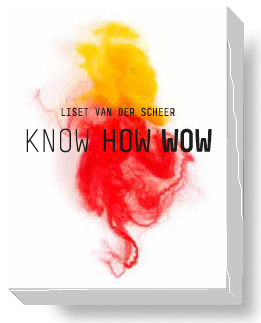



Weaving
red-thread
The tea-towels, commissioned by the Textile Museum on a dobby loom, show you the effect of the weave structure on the weft thread. Here I show the course of a thread by using a contrasting colour. I applied the same idea in the knitted towel by Knit-tet.


On the dobby loom three different warps were set up next to each other, but the weft remained the same.
The floats, or loose lying threads, ensure better moisture absorption in the fabric. However, the shrinkage is also greater because of it.
Each warp thread passes through a heddle bar, an eyelet in a shaft, and then through a reed. The shafts can move up or down leaving room for the weft thread. The shafts that move the warp threads up or down determine the definitive pattern.
The most famous pattern made with the Dobby, is the chequered tea towel. The Dobby has up to 32 shafts with which to weave patterns.
